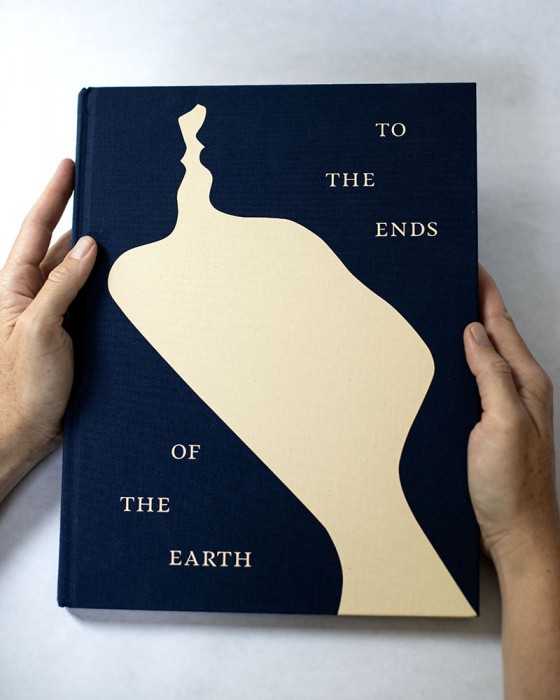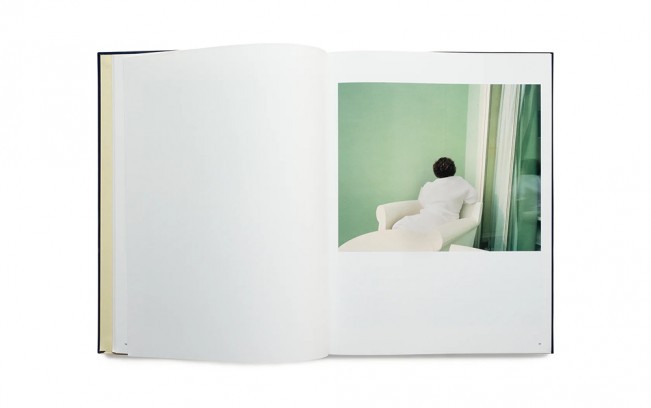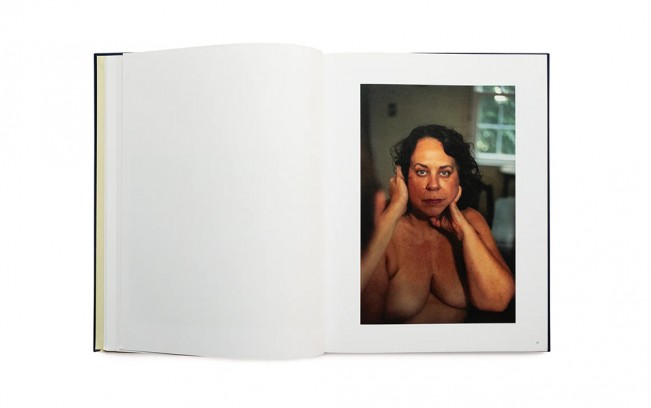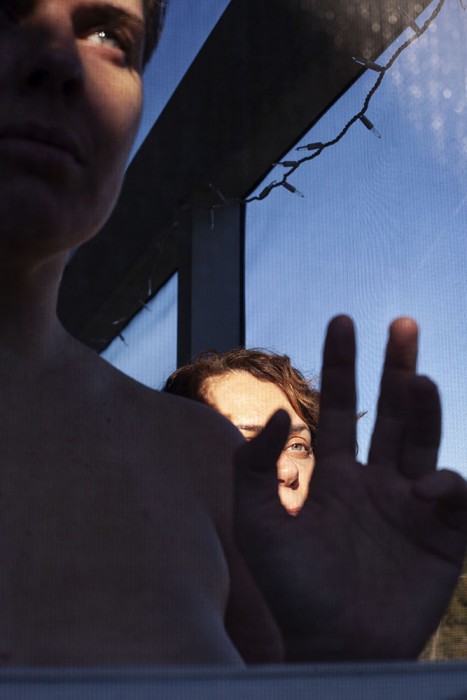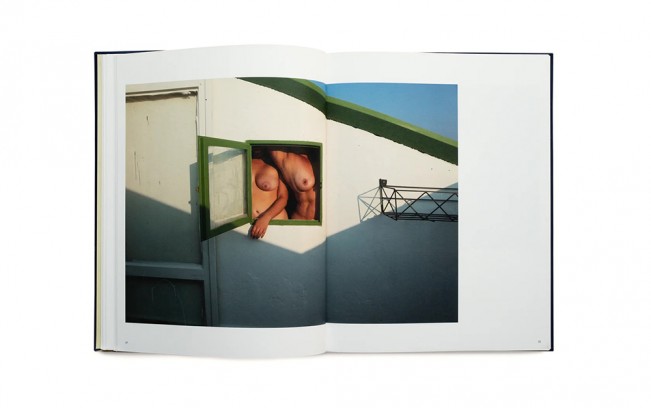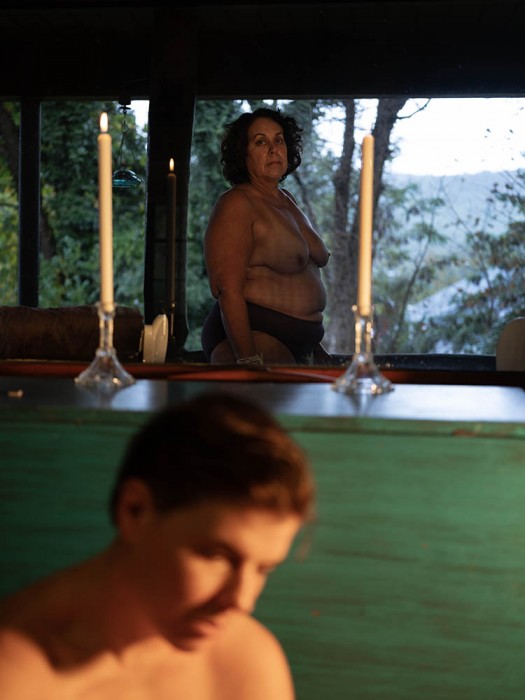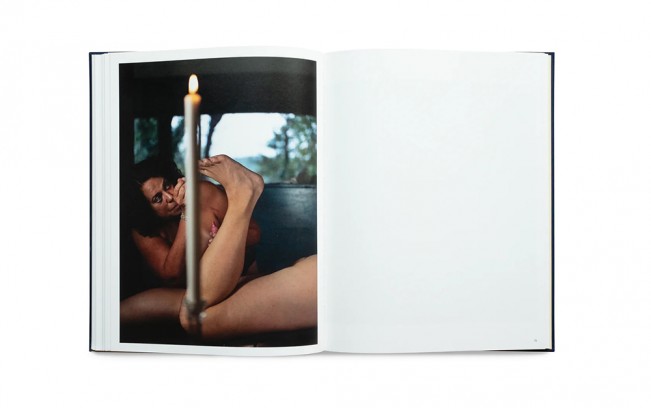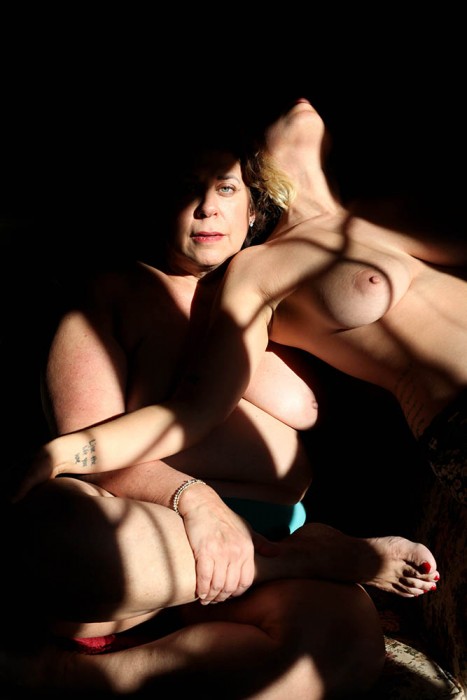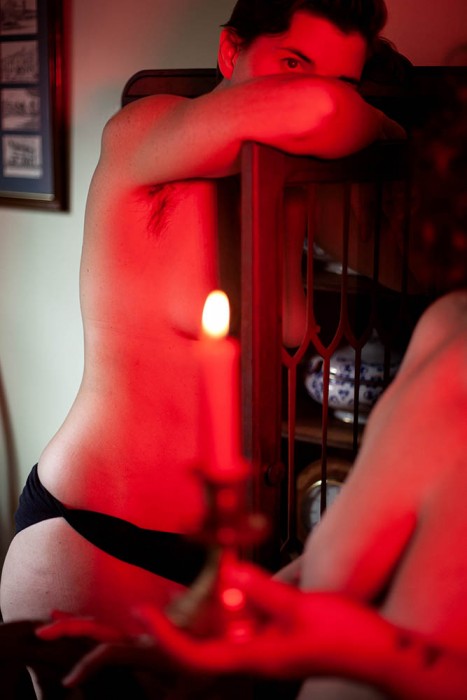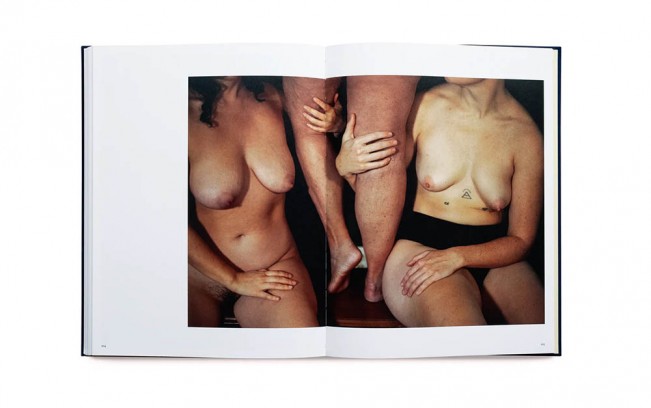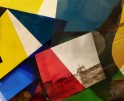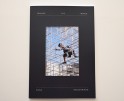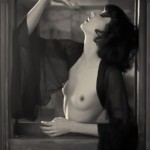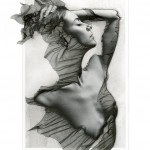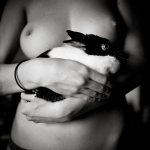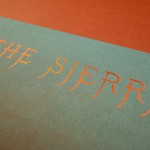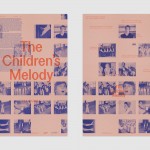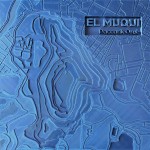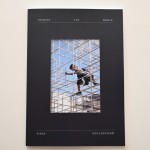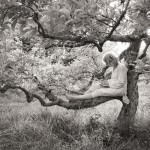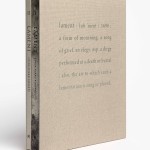Jeanette Spicer: To the Ends of the Earth
To the Ends of The Earth
Jeanette Spicer initially began the project in 2012 when working towards her thesis and was interested in the boundaries and rules—particularly from a western perspective—of the interactions between children and their adult parents. She began to stage photographs and videos interacting with her mother in strange, intimate, disturbing and sometimes humorous ways. A few years later, it became clear to her that she was a lesbian, inspiring her to make the work from another perspective. Spicer felt that visual representations of lesbians interacting with straight parents were missing and she wanted to show what this relationship could look like.
‘As a lesbian I am many things. I’m a daughter, a lover, a worker, a sexual person and there are many facets to everyone’s lives. It was important to me to show that as a lesbian, I have a multifaceted view of the world…. The tension, lust and physical and psychological boundaries in this work are continuously navigated over the years, and renegotiated, as my mother and I continue to step into new phases of our lives, together.’
Spicer began to. include her partner into the work so that this element of her identity could be included. The photographs show Spicer, her mother and partner undertaking feminine activities such as bathing, putting together puzzles, painting toenails and braiding hair. Spicer uses cropping and fragmentation in the images—deploying shadow and light, unusual perspectives and flesh—creating an ambiguity so the viewer is often unsure as to what they are witnessing. The series is often read from a heteronormative perspective—as if Spicer’s mother, partner and Spicer herself are all straight women—mispresenting the lesbian experience.
‘Some of the scenes implied by these pictures are deeply weird: they may have been uncomfortable to execute, and they are certainly awkward to look at. Their emotional residue trickles out of the space opened up between the bodily enactment of complex relationships and the understanding that their traces will be looked at afterwards. Within that space, I find bravery, psychology, love and a deep understanding of how much more radicality and passion are possible in the representation of women’s bodies than what we have seen so far.’ – Marina Berio
The following is a conversation between Jeanette Spicer and Sara J. Winston.
Sara J.Winston: To begin, please tell us about when you first began to photograph your mom twelve years ago. Did it begin as an intuitive, and collaborative, process? Or did it evolve and become that way over time? And when did your girlfriend begin to enter the photographs?
Jeanette Spicer: I needed to finalize my thesis while in graduate school, and I had been thinking a lot about performance art (Hannah Wilke, Yoko Ono, Ana Mendieta, Laurel Nakadate, and more) as well as ‘taboo’s’ – particularly in relation to people we are close to, like parents – cue to Leigh Ledare. I wasn’t interested, nor have I ever been, in making work about transgressiveness/boundary crossing/taboo for shock value. My work is formal, and first and foremost I am interested in making a beautiful image. Second to that, I compose the images/videos/mixed media in such a way that the viewer hopefully sees the themes and concerns I have, beyond the aesthetics. This all began fairly intuitively as my mom and I had worked together before, with me asking her to sit for straight forward portraits, and such for various school assignments. I thought it could be interesting to explore the mother-daughter dynamic with her, but not through her. The work was never and is not diaristic or about our relationship personally, we are performers.
My girlfriend Sara began to enter the work about 5 years ago. I was looking at a lot of photography and painting work of LGBTQ+ artists making direct work about their sexuality and I didn’t really see any representations of what it was like to be a lesbian daughter and/or daughter in law. A lot of my work and themes are about the responsibility I feel to show my personal (not the entire LBGTQ+ community) experience of being a lesbian. This permeates my life in several ways, and one is by being a daughter. Just the sheer act of photographing my mom with my lesbian partner is transgressive in our society – so that is where it began.
SJW: There is so much care–both from the vantage of a caregiver and recipient of care–communicated in your photographs. It is difficult to determine the relationships: lovers, family, friends. The pictures remind me of the tension of my own desire to be embraced by my mother, but the instinct that stops me from seeking out the warmth of her because of the social morés that have made me feel how I can touch, who I can touch, and by whom I can be touched. The presence of your mom, Marcia, is incredibly poignant. Her likeness and performance is one of both vulnerability and complete ease; strength and clarity.
When you began to work on the book, what was the selection and sequence process like? How many images, approximately, did you have in total? In the colophon of To the Ends of the Earth you thank those who helped shape your dummy. How many dummies did you work through before GOST came on board as your publisher?
JS: I basically had 50-60 images I wanted to include, but when I began working with GOST, they wanted to see pretty much everything I had ever shot. So I think I sent over a few hundred images. The selection was made by sharing an in-design document with GOST, and tossing it back and forth to highlight which images I liked, which images they liked and either eliminating altogether on an image, including, or meeting each other in the middle – meaning they kept one I liked, or vice versa. It was pretty fluid, and I was fairly open and flexible about which images remained; there were only a handful of images that I was adamant about keeping because without them the work would have felt unfamiliar and I didn’t want that. The sequencing was done the same way, GOST would put something together and I would add my two cents! After we agreed upon a sequence, GOST printed small prints of each image and made another sequence physically by hand, and then created another in-design document for me to look at. The dummy aspect was more once GOST and I were in the throes of working together to narrow down a sequence, I would print it out and take it around to friends. Prior to GOST coming on board I actually had a very basic PDF – I knew from having made a book before that it would have so many different iterations and lives before it became solidified that I didn’t really bother to put a lot of time and effort into multiple dummies.
SJW: Are there things about the book in its physical form that surprise you? Particularly because of the highly collaborative experience you had in making the sequence and design.
JS: Nothing really surprised me other than during the sequencing it started to become clear that who I was and who Sara was were not always obvious to perhaps an outside viewer. I know my body and her body distinctly, but even certain images of me when I had blonde hair (considering the series lasts 12 years and I look different at various stages of life) people think that particular image of me is not me, but someone else. So the idea that the book could hold multiple different women – particularly the blurring of Sara and me was intriguing and not something I had considered in the making of the work.
SJW: It is totally intriguing to know that it was something that you learned from the work, an unintended outcome, if you will, that the identity of your and Sara’s bodies become difficult to distinguish. I think it allows a viewer to imagine themself to be in the position of either of you.
I am curious about the writing that is in the book. Did you always know that you wanted Marina Berio and Keren Moscovitch to contribute an essays?
JS: Marina Berio has been a long time friend, we met back in 2018, and I had known of her previously as chair of the one year certificate program at The International Center of Photography, and as a total badass. Once I needed to decide on text or not, I knew that both Keren Moscovitch and Marina Berio would be the perfect fit, but it was only until last year that it came to me, it wasn’t something I always knew, for either Keren or Marina. Both Marina and Keren are incredibly smart, well accomplished teachers and artists, and also, mothers. I love though that neither wrote about being a mother. I knew that Marina and Keren would both be very engaged and considerate in how they wrote about the work, and that they would also write from completely different perspectives and that is exactly how it turned out. I couldn’t be more pleased with their writing.
I think both their contributions enhance the experience of the book, their contributions are lovely.
SJW: Thank you for taking the time to answer these questions! I appreciate it. Lastly, what’s on the horizon for you? Where can people learn more about what you’re up to?

© Jeanette Spicer, To the Ends of the Earth
I am letting myself revel in the beauty of what it took to create this project, the various lives it has lived, and the amount of work that went into making the book. I can finally look at it from afar with pride, ease, and interest. I’ll occasionally pick it up as if I haven’t seen it before, and that feels really nice.
I am also continuing to shoot for my project, What it Means to Be Here, which, in short is a 7 year ongoing multidisciplinary series about the lack of lesbian representation within photography and my experience of being an overly sexualized, objectified woman while simultaneously invisibilized and underrepresented, as a lesbian. The work depicts a small group of lesbian, bisexual and queer women who are close friends/lovers. In the way I compose the images I create ‘worlds’ and new realities that sit between reality and fiction. I am interested in viewers being able to see women in a reimagined way – photographed not by a man, for men, but by a lesbian.
I am entering a new phase of the work which involves printing solarized darkroom photograms. I am utilizing a process dominated previously by cis, hetero men who were part of the Surrealist movement which typically objectified women’s bodies and disregarded their talent and minds. I am reclaiming these processes by working with them as a woman, as a lesbian and by depicting lesbian, bisexual and queer women in the work. This work will be on view at Penumbra Foundation one evening in early February through Open Studios, which is supported through their Artist in Residence Program which I was a part of in fall of 2024.
Jeanette Spicer is an American visual artist who creates performative videos, photographs, and mixed media. She received her MFA from Parsons The New School in 2013 and has attended Vermont Studio Center, The Wassaic Project, and Benaco Arte in Italy, amongst other residencies. Her first monograph, Sea(see) was published in 2018 by Kris Graves Projects. Her work has been exhibited internationally and published in outlets including The New York Times, New York Magazine, The New Yorker, and Vogue. Spicer is co-editor of WMN a publication showcasing art and poetry by marginalised communities of lesbians. She currently teaches at The International Center of Photography.
GOST Books is an independent visual arts and photography publisher based in London
We pride ourselves on an uncategorizable output of diverse subject matter and design: from a chronicle of seven men claiming to be the Messiah; a study of Turkish soap operas; artworks inspired by the largest breeding grounds for flamingos in the Southern Hemisphere; archive photographs from the Mexico City police department; to portraits of winners of state-run competitions in Belarus.
GOST aims to not only provide a platform for the work of emerging artists but contribute to print legacies of masters in the medium.
Sara J. Winston is an artist and contributing editor at Lenscratch.
Follow Jeanette Spicer, GOST Books, and Sara J. Winston on Instagram:
@jsp_icer; @gost_books; @sarajwinston
Posts on Lenscratch may not be reproduced without the permission of the Lenscratch staff and the photographer.
Recommended
-
Photography Educator: Juan OrrantiaDecember 19th, 2025
-
Aaron Rothman: The SierraDecember 18th, 2025
-
Eli Durst: The Children’s MelodyDecember 15th, 2025
-
Paccarik Orue: El MuquiDecember 9th, 2025
-
Kinga Owczennikow: Framing the WorldDecember 7th, 2025

